Where explorers go to relax: Benedict Allen swaps Papua New Guinea for Portugal's unsung Alentejo
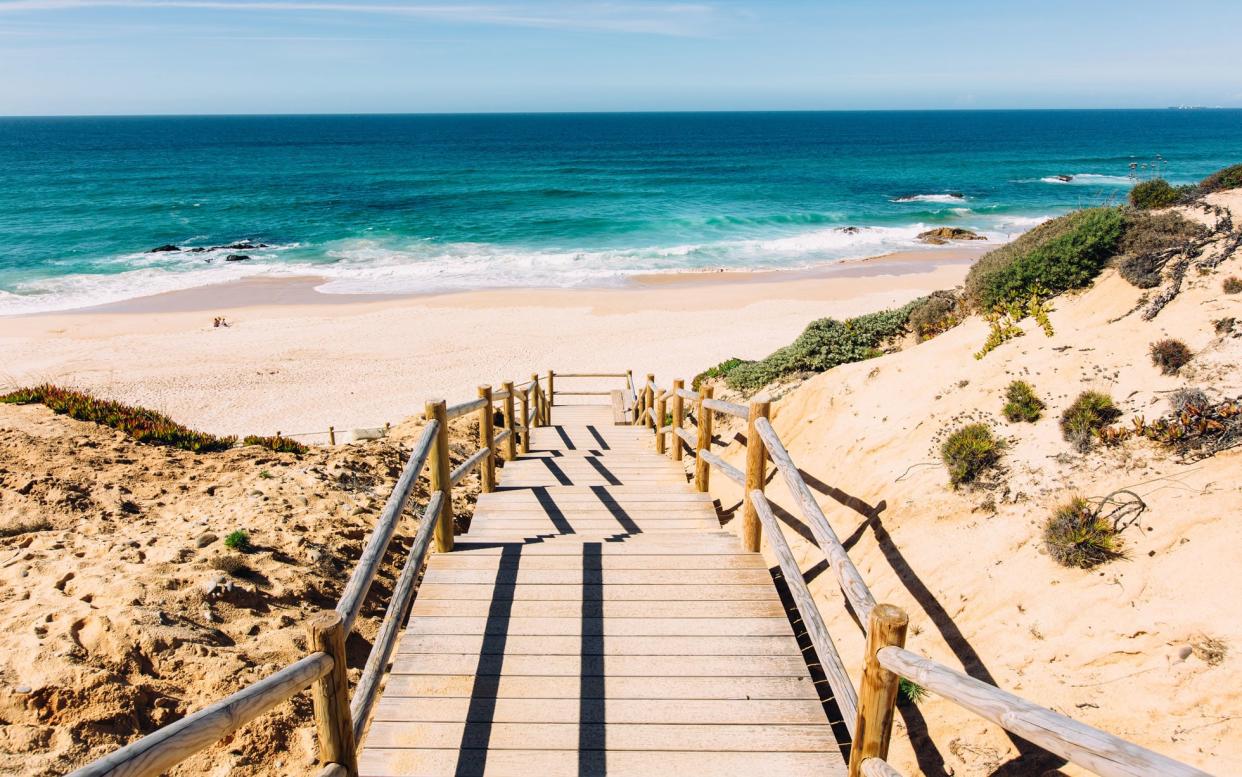
“It’s not easy being married to an explorer,” my darling wife announced, just as I was enjoying my Weetabix. “I think I deserve a holiday.”
“So do I,” said my eight-year-old son Freddie, “but castles only this time, please.”
“Just as long as it has a good Wi-Fi connection,” said Natalya, 10, with a little yawn, who had got hold of my new mobile phone. “And a beach.”
Our toddler, Beatrice, looked up from contentedly scribbling on the wall and marched off to get her red bucket and spade.
All of them were right. There was no putting it off any longer. The truth was that since my last venture to Papua New Guinea – the malaria, the dengue fever, the dramatic rescue from a war zone – we all had need of a holiday. And Portugal sounded nice.
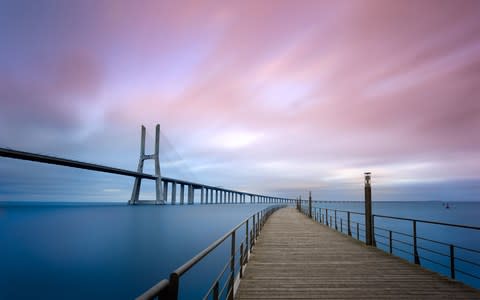
So we bundled ourselves off to the airport and soon enough were zipping in our hire car along the easy route south through Lisbon, over the Vasco da Gama bridge. This stupendous feat of engineering wasn’t meant to be a feature of our holiday, but we just couldn’t help ourselves marvelling at the sheer ambition of the thing – opened to traffic in 1998, complete with lengthy spokes and spindly lamp posts.
Its sweeping viaduct measured more than seven and a half miles – second in Europe only to Mr Putin’s new and somewhat extravagant, some might say slightly self-indulgent, Crimean Bridge. We were transported over the Tagus river and ever closer to our destination.
We had elected to try the Alentejo, a region these days little more than an hour from the capital, yet by all accounts still quite rural. From memory, the place had the largest cork forests in the world and an extremely long coast. It might just satisfy the varied needs of the three exacting Allen children – and their frazzled parents. For her part, my wife Lenka felt she simply needed a spell by a tranquil swimming pool – “but before that a stiff drink!” – while I favoured undulating herbal meadows and the prospect of a good old-fashioned family picnic.
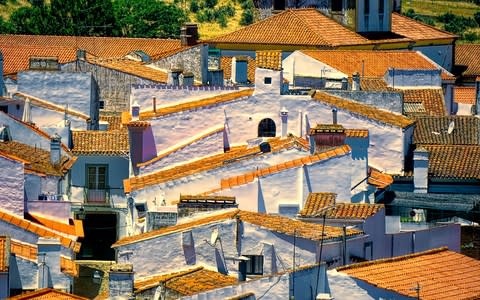
Through vineyards and olive groves, past electricity pylons decked with glorious but untidy storks’ nests, the soil grew ever more sandy. Already I was taking to this neglected little corner of Portugal. The nation itself is England’s oldest political ally – a good start, I felt – although for some reason it seems that most Britons tend to ignore the Alentejo, instead speeding further south to the whitewashed villages and friendly coves of the Algarve – or maybe north to enjoy the stately old bridges and cobbled backstreets of Porto.
Now we were skirting Setubal, a bustling fishing port in Roman times and these days overlooked by the imposing battlements of the Castle of Sao Felipe, constructed – according to Natalya, who’d looked it up on her phone – “in the 10th century during the Moorish occupation and blah, blah, blah... freed along with the city of Lisbon in blah, blah, blah... during the otherwise not very satisfactory-sounding Second Crusade”. The fort was also the magnificent setting for a reception given by King Manuel I for Vasco da Gama, after the mariner’s discovery of the sea route to India in 1498.
22 reasons why everyone is going to Portugal right now
We drove around the bay, and now a lone flamingo rose into the blue sky. Natalya took off her pink headphones. She too was beginning to relax into a forgotten existence of sunshine and peace. “Faster, Daddy, faster!” screamed Beatrice, in my ear, as we neared the beach at Comporta. Next thing, we were sprinting to the shoreline, stripping frantically as we sped over the clean white sand and into the bracing sea.
After a first plunge, Freddie began constructing a driftwood fortification, Beatrice pottered in her sunhat, and Natalya assembled what at this rate would be her definitive collection of clam and razor shells.
These were simple, family pleasures, just the sort that the doctor ordered – in my case, along with a range of pills. Lenka retreated to one of the two restaurants positioned neatly among the dunes. Periodically, she adjusted her sunglasses and gazed beyond her braised octopus, chilled wine and frenzied children, out over the rolling jade Atlantic.
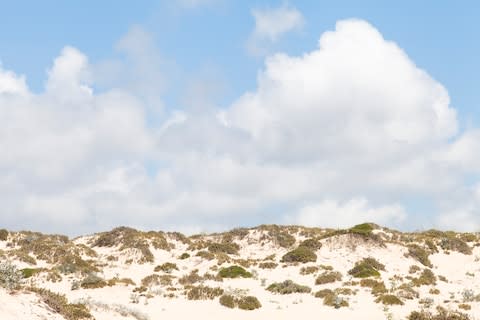
The sun was sinking and we had yet to seek out our accommodation, a self-catering villa situated on old farmland among the dark and ancient cork trees. There, it turned out, you could sit by the swimming pool, listen to the cooing of collar doves and think about dipping a toe in.
However, I went off with the children exploring instead. We wandered through the pines, each undulating grassy vista of poppies and blue thistle more pleasing to the eye – and each suggesting a better site for my proposed picnic.
“Acorn!” said Beatrice, presenting a fir cone the size of a hefty grenade. “Attack!” said Freddie, encouraging one huge blister beetle to battle it out with another. For hour upon hour we studied the endeavours of the insect world, tracing ant highways, watching the workers dismember seeds and lug them diligently homeward.
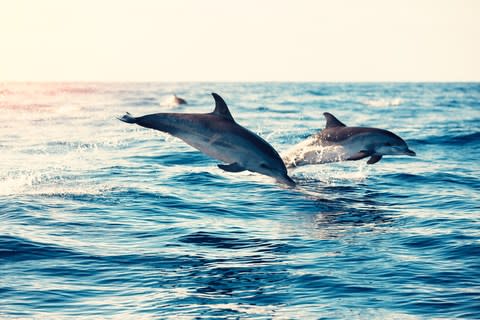
The next day we were off for a spot of dolphin watching in the Sado Estuary – now an important reserve and host to one of only three resident freshwater pods in Europe. From the marina at Troia, we cut through the waves in our catamaran, giving chase as the dolphins hunted and frolicked. After that, we somehow found time for a nearby ancient ruin.
Apparently, this had been a Roman fish-salting depot. Nowadays, it looked – at first sight – like the dodgy foundations of someone’s unnecessarily large barn. None the less, this expedition too proved something of an unlikely hit. It boasted a mausoleum, a couple of bath houses (a lovely one for the elite, a cramped one for the plebs) and touching little graves dating from the fifth century, each pointing to Jerusalem, off to the north-east. This was also where we discovered the shipwrecks.
Perhaps navigating the lagoon had proved one challenge too many for the great navigators of Portugal – or maybe steering their ships slap bang into the mud was a brilliant insurance scam. Whatever the reason, this was a first-rate maritime museum – the cracked hardwood timbers like whale ribs, the splintered keels, everything as if curated by the crabs.
The 75 greatest family holidays for 2018
We settled into the gentle rhythms of the Alentejo countryside. Old ladies sold us bags of caracois – snails – as a snack, or we barbecued sardines. One day we ventured to the old city of Sines, and the very castle from where Vasco da Gama set out. It was on this great expedition – ours, not Vasco’s – that we at last had our family picnic.
Off we wandered along the empty sand that stretches for 30 miles all the way down to the Lagoas de Santo Andre e da Sancha, an unpromising brackish backwater that we loved for being a haven for tree frogs, reed warblers and red herons.
There were more adventures to be had – through decaying backstreets filled with quarrelling swallows, or out among the rice paddies which again spoke of Portugal’s seafaring heritage. But the last few days we spent inland on the Great Lake of Alqueva, which was formed by a gigantic modern dam.
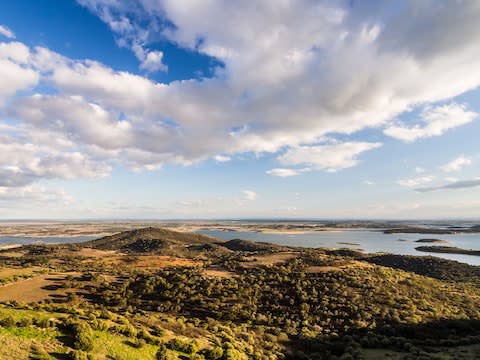
We buckled Beatrice into her life jacket (only for her to discover the joys of the distress whistle attached), stowed a couple of kayaks on board, and set forth across Europe’s largest man-made lake in a motorised houseboat hired from the marina at Amieira.
Once upon a time, this had been an arid land riven by deep gorges; now it was necessary to veer around barely charted islets that had once been hilltops. Left on our own to navigate with the help of a delightfully vague map – this read, tantalisingly, “Forbidden to Sail in Spanish Waters” – it was surprisingly easy to imagine ourselves back in the Golden Age of Discovery.
We negotiated shallower waters with the kayaks, playing Swallows and Amazons and discovering for ourselves new worlds. In due course, the children too had a go at steering the mother vessel – which, after a couple of incidents, Lenka dubbed “Titanic II.” Each evening, we came ashore to dine, our favourite dish being the black pork served up by chef Rui and his enthusiastic wife, Graca, at the establishment known as Sabores da Estrela.
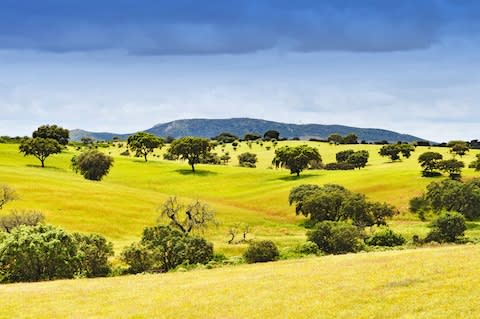
On another occasion, we made landfall at the medieval town of Mourao, where we investigated the castle built against yet more Moorish invaders and the usual Spanish.
By now, we all felt like we were explorers. And, of course, being human, we are. But along the sandy shores and in the poppy-laden fields of the Alentejo, we were reminded of that constantly.
“Steady as she goes,” I said, as Natalya took the helm and we steered a course that would take us home.
“Aye, aye, captain, steady as she goes!” Once more, all was right in the world.
Win a luxury holiday worth up to £80,000
How to get there
Sunvil (020 8758 4722; sunvil.co.uk) offers a 10-night stay in the Alentejo from £1,892 per person, based on a family of five sharing in high season. The price includes seven nights’ self-catering at the three-bedroom Herdade de Montalvo Villa in Alcacer do Sal, three nights’ self-catering on a liveaboard motor cruiser with three cabins, return flights from Gatwick to Lisbon, and car hire.
More information at visitalentejo.pt/en

